When it comes to street food, you may be used to the local hot dog stand or shawarma stand around the corner. However, if you’re ready to expand your cultural horizons even further, a whole new world of food will open up to you. Japanese culture boasts some of the most creative and mouth-wateringly delicious street food imaginable. From sweet to savory, these are 10 popular Japanese street foods that will make your mouth water and you’ll want to try them.
10. Karaage
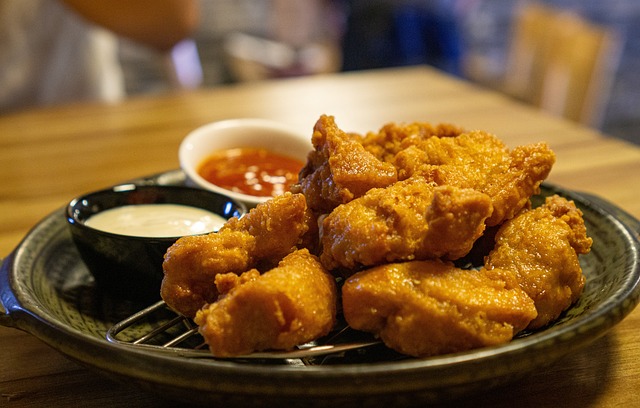
Vegans and vegetarians aside, it would be pretty hard to find anyone who wouldn’t enjoy a plate of fried chicken. A favorite comfort food in many cultures, fried chicken has been used in some truly inventive ways, not the least of which is karaage.
The name itself comes from the cooking methods, which involve marinating slices of meat, in this case chicken, and then deep-frying them until golden brown. Karaage differs from typical fried chicken due to its marinade, which is often a mixture of soy sauce, sake, ginger, and garlic. This method ensures that once the frying is complete, the inside of the chicken is not only juicy and succulent, but also infused with extra umami flavor. The crispy exterior is usually due to the coating, which can be wheat flour or potato starch.
Although chicken is the most popular option, this preparation can easily be applied to seafood and other types of meat. With its excellent combination of crispy skin and unrivaled taste, karaage is a favorite of many Japanese and is a staple of home cooking and street vendors.
9. Korokke
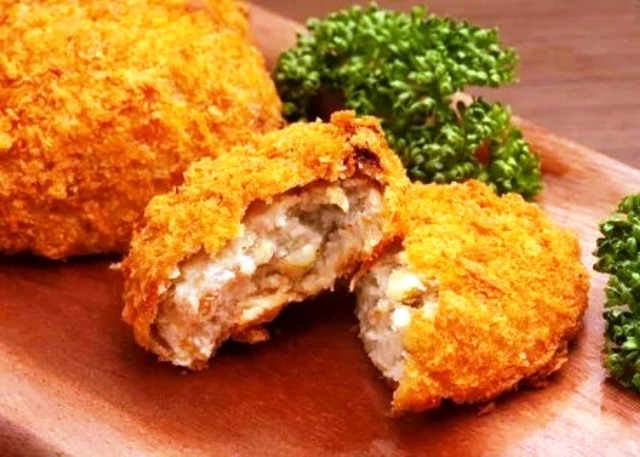
Before discussing korokke properly, it’s important to understand the Western dish that influenced it: the croquette. Croquettes originated in France and consist of a filling that is coated in a special sauce, breaded, and then fried until crispy. This is fitting, as the name croquette even comes from the French word croquer, meaning “to crunch.”
Korokke takes the croquette and gives it a distinctly Japanese twist with fillings like mashed potatoes, ground meat, or mixed vegetables. When done properly, you’ll end up with a perfectly balanced dish with a crispy exterior and a creamy texture on the inside. This is only enhanced by the wide range of ways to customize the filling with other ingredients like beef, pork, seafood, and even curry. It’s also very common to find korokke paired with tonkatsu sauce, which only enhances its flavor profile.
Often, korokke is sandwiched between two pieces of bread, turning it into a korokke pan, making the dish even more convenient. Its healthfulness and delicious taste have made korokke a staple of Japanese street food, as well as school lunches and bento boxes.
8. Okonomiyaki
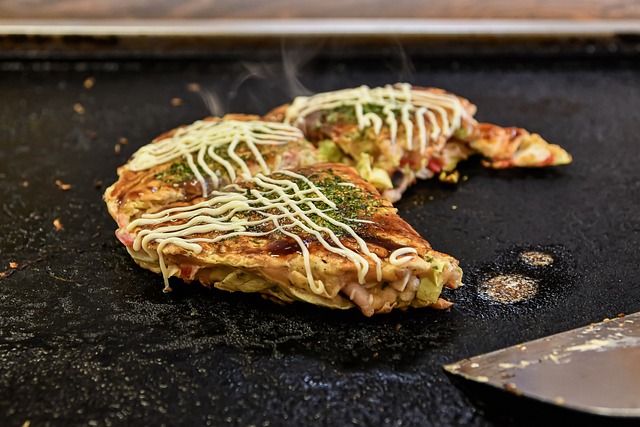
Everyone loves pancakes, but rest assured: okonomiyaki is not your run-of-the-mill pancake you get at IHOP or Cracker Barrel. Unlike typical pancakes, which tend to be sweet, okonomiyaki is more savory.
Like Takoyaki, one of the great things about okonomiyaki is how customizable it is, with its name even translating to “grill it however you like.” Like regular pancakes, the batter starts with flour, but this is where it truly becomes a unique creation. That batter is then mixed with shredded cabbage, eggs, and a variety of other toppings like meat, seafood, and even cheese. If you’ve ever had okonomiyaki, you know that the end product is an absolute symphony of different textures and flavors.
Another aspect that contributes to the widespread success of Okonomiyaki is the interactive element that goes hand in hand with it. Restaurants often prepare okonomiyaki right in front of the customer or even allow them to cook it themselves, much like Korean barbecue. With all this in mind, you can easily see how this personalized pancake has taken off from Osaka and spread around the world.
7. Yakitori

A common feature of Japanese dishes is that many of them can easily become everyday street food or be served in a real restaurant. A great example of this is Yakitori, a very popular skewered chicken dish that is usually cooked over hot coals.
The dish itself couldn't be simpler: diced chicken pieces marinated in tare soy sauce, cooked, and then served on a skewer. This simple cooking method results in mouthwateringly tender and flavorful meat, topped with a delicious caramel glaze. Yakitori isn't all about chicken, though: it can easily be substituted with other ingredients, such as vegetables, beef, or seafood.
Yakitori is a very entertaining food, and it is common to see people enjoying it with a cold beer in the other hand. Often, the best dishes don’t need flashy theatrics or fancy presentation, as sometimes simplicity and good taste are more than enough. Just imagine walking home on a cold day in Japan and the aromas of barbecue still cooking wafting up your nose. Like many of the other street foods on this list, yakitori has not only spread beyond Japan, but has also expanded beyond its original format. Today, it is not uncommon to walk into a restaurant and find it on the menu alongside more complex dishes.
6. Taiyaki
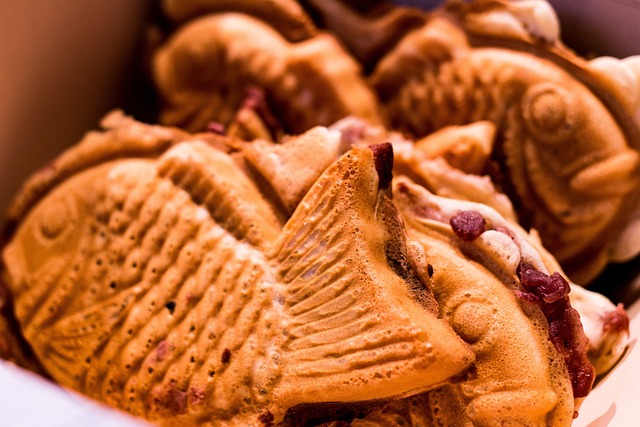
Japanese culture is replete with sensational sweets and creative confections, many of which date back hundreds of years. One such treat is Taiyaki, a Japanese pastry that has a unique visual feature: it is shaped like a fish. The name of the fish in the pastry translates to “baked sea bream,” a fish that is considered a symbol of good luck in Japanese culture.
Originating in Toyko during the Meiji Period, a time of great economic, political, and social change, Taiyaki was created by a man named Seijiro Kanbei. The original and most standard version of Taiyaki is filled with sweet red bean paste, which is made from adzuki beans and is a popular filling in many Japanese delicacies. This, like many other Japanese snacks, can be modified or customized by placing taiyaki in different places with sweet potato, custard, chocolate, or even savory options like cheese and sausage.
The whole thing is held together by a batter that, like pancake or waffle batter, is poured into fish-shaped molds and cooked until it turns a savory golden brown. With its delicious flavor and enchanting appearance, Taiyaki has become a shining example of Japanese comfort food.
5. Yakisoba

There are countless Japanese noodle dishes, from cheap street food to the most luxurious five-star cuisine. However, Yakisoba seems to hold a special place in people's hearts, and it's not hard to see why.
Yakisoba is made by stir-frying ingredients, including ramen noodles, as well as vegetables such as cabbage, carrots and onions. It is from this method of preparation that the dish gets its name, which is a translation of the term “grilled noodles.” Meat is also optional: many choose to add thinly sliced pieces of pork, beef or seafood. What sets the dish apart is the special sauce that the fried ingredients are seasoned with: a savory-sweet Yakisoba sauce made from Worcestershire. Once everything is ready, the finished product can be sprinkled with bonito flakes, pickled ginger and mayonnaise.
All of this adds up to a savory dish that has a strong umami flavor thanks to the addition of meat and seasonings. Unami means “essence of flavor” in English and is often found in meaty and savory Japanese dishes. Because of its portability and combination of textures and flavors, yakisoba has gained a global fandom and has quickly become more common in several cultures.
4. Taco Tamago

Sure, fried eggs, whether scrambled or boiled, are a staple of countless diets around the world. However, Tako Tamago takes the poached egg concept and elevates it to its most visually stunning and unique flavor. Tako Tamago is a unique little dish, even among other Japanese street foods, boasting a unique combination of elements.
Tako Tamago contains a quail egg that has been placed inside a tiny, bite-sized octopus. Its final appearance is a real feast for the eyes even before it is eaten, with the egg almost serving as the octopus’s brain. The dish’s appeal extends beyond its appearance, however: the combination of the boiled quail egg and chewy octopus makes for a delicious combination of flavors.
Tako tamago, like many other Japanese street and street foods, is usually served on a skewer, making it a very portable dish despite its odd appearance. Honestly, this dish is a perfect little microcosm of Japanese street food, as it boasts not only a great visual effect, but also a delicious taste.
3. Onigiri
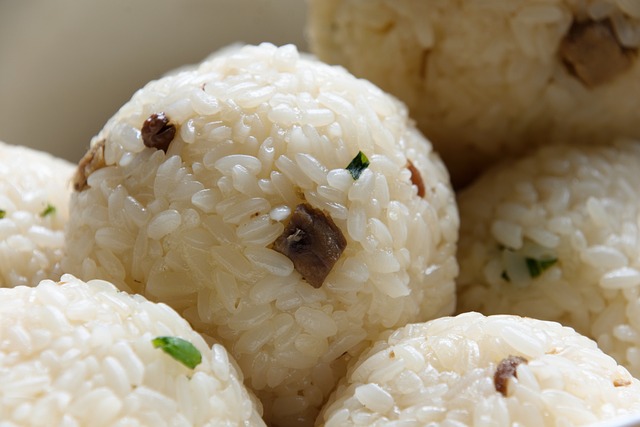
One only has to look at how often it ends up in the hands of anime characters to understand the Onigiri's immense popularity. For example, in One PieceWhen Roronoa Zoro is tied up at Morgan's Axe Base, a little girl from a nearby town brings him homemade Onigiri. When the East Blue's deadliest swordsman can't resist their deliciousness, then you know it's a treat worth getting excited about.
The name translates to “rice ball,” and the dish has been a staple of Japanese cuisine for decades. The hand-made snack starts with rice that’s lightly seasoned with salt or vinegar, and a sheet of nori, a crunchy piece of seaweed. Once the base is prepared, the Onigiri gets its filling, and that’s where its customizability comes into play. Simply put, the sky’s the limit when it comes to Onigiri: fillings range from sweet to savory, and vary in texture as well. These include pickled plums, grilled salmon, kimchi, cheese, tuna mayo, and teriyaki chicken, each offering something different packed into the rice.
With a variety of fillings and a portable size, onigiri is a staple of Japanese lunches, contributing to its ever-growing popularity around the world.
2. Dango

The name dango comes from the Japanese verb "dango", which means "to knead or shape into a ball". The sweet Japanese treat is a small, chewy, bite-sized dumpling made from glutinous rice flour and served on a stick in groups of three to five. Typically, the most popular filling for dango is Anko, also known as red bean paste, a filling found in many Japanese desserts.
Because it’s made with rice flour, dango is usually white in color, but people often use fruits, herbs, and eggs to change its flavor and color. This is especially true when it comes to Hanami Dango, a variety of colorful dango that is commonly sold and enjoyed during cherry blossom season in Japan. There’s also Kuri Dango, a great option if you’re a nut lover, where the dango is coated in a sweet chestnut paste. Then there’s Goma Dango, a version filled with Anko but coated in a layer of sesame seeds and then fried until crispy. It’s this combination of simplicity, variety, and inherent tradition that has allowed dango to remain a beloved Japanese treat for decades.
1. Takoyaki
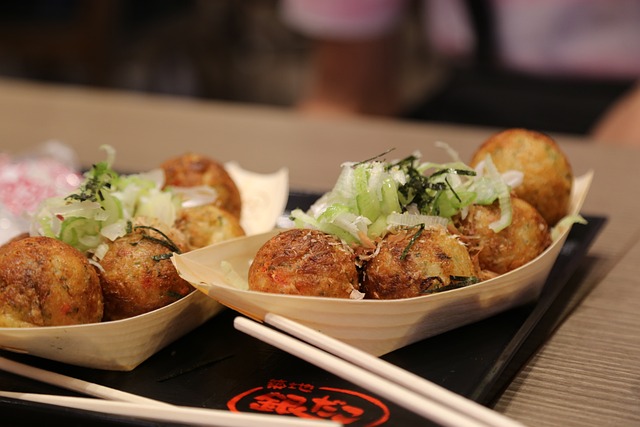
Takoyaki is a favorite dish of many Japanese food lovers, and its popularity has spread beyond Osaka, Japan, and into the United States. Its name, Takoyaki, is an accurate translation of what it is: grilled octopus, although other ingredients are often added.
The preparation process begins with a takoyaki batter made from flour, eggs, and dashi (a type of Japanese soup broth). This is mixed with diced octopus, pickled ginger, green onions, and any additional toppings desired by the chef or customer. These toppings can include bits of sausage, cheese, mochi, corn, kimchi, and even other types of seafood, such as shrimp.
Once the batter and toppings are ready, it is poured into a special cooking mold designed to shape the takoyaki into a round shape. When cooked correctly, the final product should be a perfectly round, bite-sized ball, with an airy interior and crispy exterior. The finished takoyaki balls are often coated with a thick layer of special takoyaki sauce, mayonnaise, seaweed flakes, and bonito flakes. It’s no wonder that takoyaki has taken the culinary world by storm with its combination of delicious textures and unique personality.









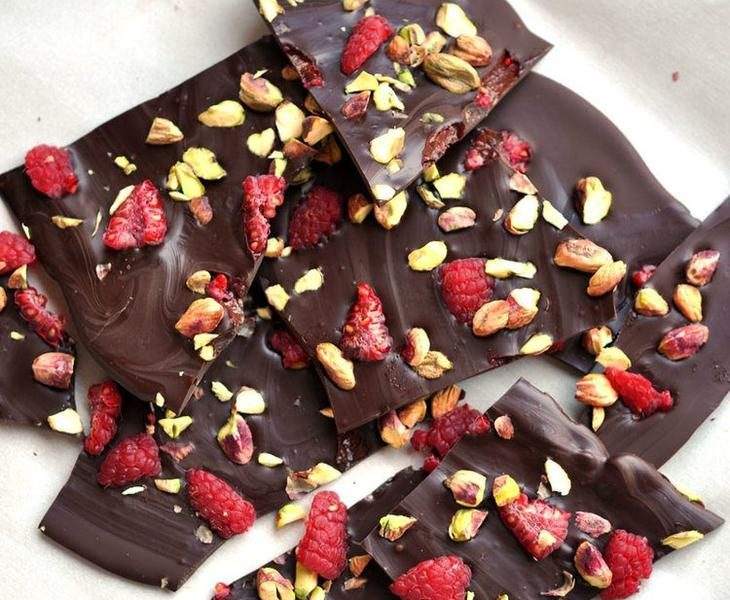



Оставить Комментарий